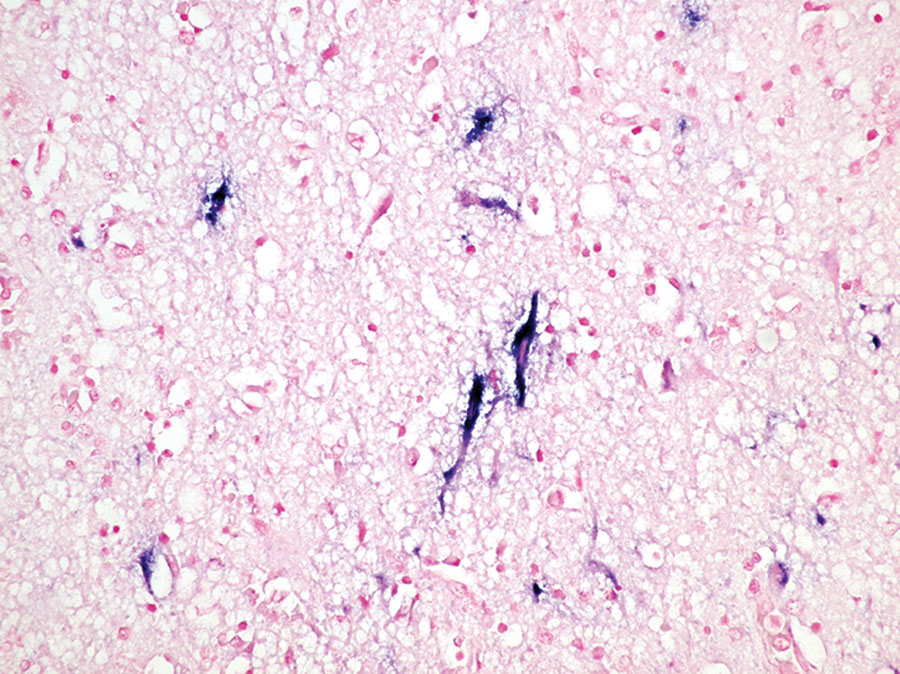Volume 27, Number 4—April 2021
Dispatch
Eastern Equine Encephalitis Virus in Mexican Wolf Pups at Zoo, Michigan, USA
Figure 2

Figure 2. Brain specimen from Mexican wolf pup infected with eastern equine encephalitis virus (EEEV) at Binder Park Zoo, Michigan, USA. Blue stain shows EEEV nucleic acid in the perikaryon and dendrites of necrotic and intact neurons. Nuclear fast red counterstain shows nitro blue tetrazolium/5-Bromo-4-chloro-3-indolyl phosphate (NBT/BCIP) chromogen.
Page created: March 02, 2021
Page updated: March 18, 2021
Page reviewed: March 18, 2021
The conclusions, findings, and opinions expressed by authors contributing to this journal do not necessarily reflect the official position of the U.S. Department of Health and Human Services, the Public Health Service, the Centers for Disease Control and Prevention, or the authors' affiliated institutions. Use of trade names is for identification only and does not imply endorsement by any of the groups named above.